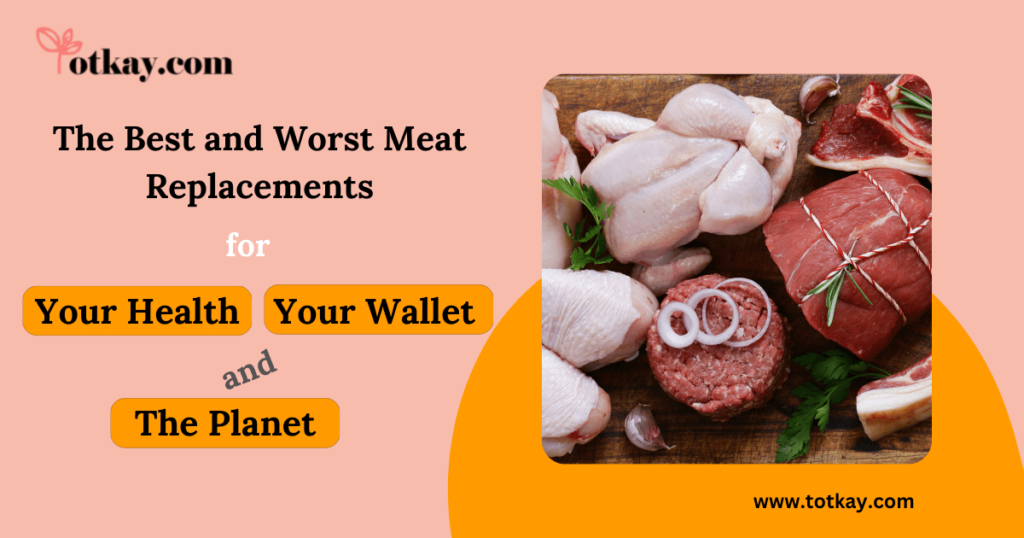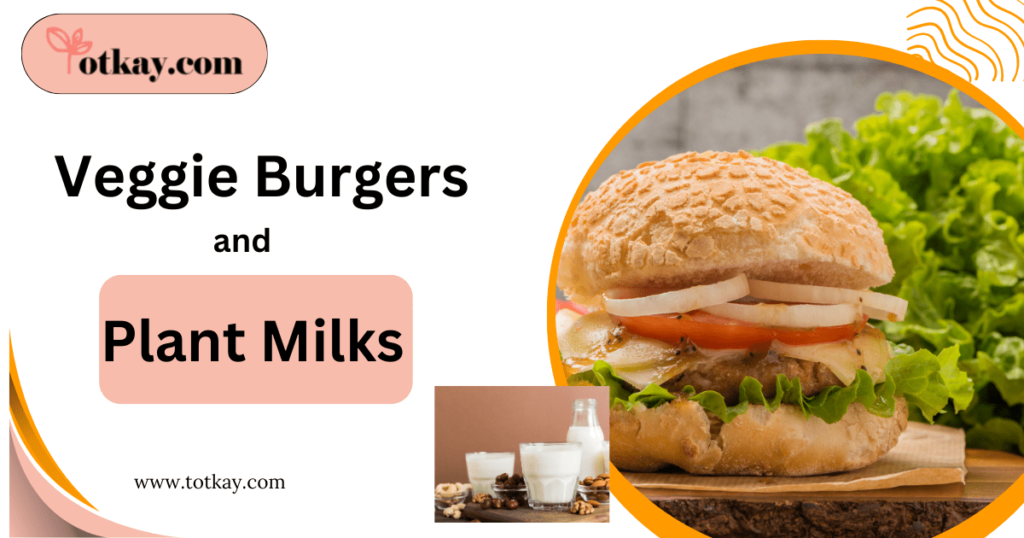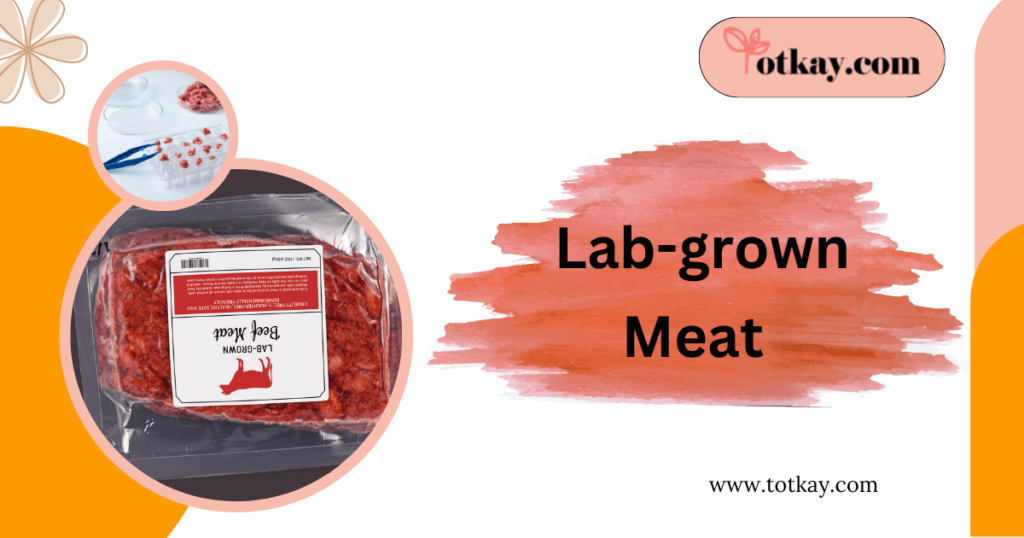The best and Worst Meat replacements for Your Health, Your Wallet and the Planet

Meat and dairy products are recognised as contributing to the climate crisis, as we all know. Global warming could have serious effects on us if we don’t reduce our consumption of these products.
The difficulty is, however, what else can we use in their place? Which are the best possible options for our wallets, the environment, and our health?
These questions were the focus of a recent study. We are attempting to find the greatest substitutes for flesh and dairy that are affordable, envirenmental-friendly, and beneficial to our fitness. By investigating these choices, we may make well-informed decisions about our lifestyle and diet, ultimately contributing to the development of a more sustainable future.
I compared the various meat and dairy substitutes by focussing on four main factors: cost, environmental effect, health advantages, and nutrition. Traditional foods like tofu and tempeh, processed foods like veggie burgers and plant-based milks, and even cutting-edge technology like lab-grown beef were among the many plant-based possibilities I looked at. Additionally, I examined entire, unprocessed foods like peas and soybeans. I utilised a variety of techniques to create fair comparisons, including comparing foods by calorie or serving size and considering how they would fit into a person’s total diet when used in place of dairy and meat.
Table of Contents
Beans Beat the Lot
The study identifies that beans and other unprocessed plant-based foods are the best replacements. These basic, whole meals, which include soybeans, peas, and beans, are the finest substitutes for meat and dairy in our diets. Making this switch can considerably improve our health and well-being.
In fact, the analysis discovered that alternatives could reduce nutritional imbalances by half in developed countries such as the United Kingdom, the United States, and Europe. Even more concisely, it has the potential to decrease nutrition-related casualties by 10%, including heart disease, stroke, cancer, and diabetes.
When we turn to these plant-based items like lentils, pulses, and soybeans, we may help the environment as well as our finances. The quantity of land and water required to grow our food would be reduced by more than half, while greenhouse gas emissions would also fall. Similarly, food prices would fall by more than a third, making healthy and sustainable eating more affordable to everybody.
Veggie burgers and plant milks

Plant-based meals, such as veggie burgers and plant milks, remain an excellent option for individuals seeking to substitute meat and dairy. They have several advantages, however, less than unprocessed legumes such as beans and lentils. In contrast, processed plant-based meals often offer smaller carbon reductions and health benefits and may be slightly more expensive.
In spite of these differences, both prepared and raw plant-based items can greatly benefit our health. They are rich sources of fibre, potassium, and good lipids yet low in harmful cholesterol, saturated fat, and iron from animal sources. Hence, we can lower the risks of chronic diseases as well as make our lives better by incorporating these products into daily life.
When it comes to the environment, green foods are the best option. Plant-based options, whether processed or whole, are far more eco-friendly than meat and dairy. This is because they emit less greenhouse gases and need less land and water to grow. For example, raising cattle for steak requires less water than growing beans or lentils.
While turning plant-based meals into products such as veggie burgers and plant milks consumes some energy, the total environmental advantages exceed this. However, processed plant-based foods are generally more costly than their unprocessed equivalents.
So, the study uncovered that unprocessed legumes, such as peas and beans, were the preferred option. They excelled in all aspects, including nutrition, health, environmental effects, and cost. These basic, whole foods are high in nutrients and provide several health advantages while being both environmentally friendly and cost-effective.
Tempeh, a classic Indonesian meal made from fermented soybeans, came in second place, surprising many. Tempeh is an excellent choice since it keeps the majority of soybeans’ nutritional advantages while requiring no processing or additions. Furthermore, it is quite inexpensive, giving it an advantage over more processed alternatives such as vegetarian burgers.
Lab-Grown Meat

The study also revealed an unexpected fact concerning lab-grown beef. Despite being a novel and promising technology, existing evidence shows that lab-grown meat may not be a viable replacement for traditional meat or plant-based options. This is because the process of generating animal tissue in a lab consumes a lot of energy, resulting in significant emissions comparable to those of beef burgers.
To make matters worse, lab-grown beef is prohibitively costly, costing up to 40,000 times more than conventional meat. Lab-grown meat has similar health effects as beef since it is intended to emulate it. While it is feasible that prices and emissions would fall as manufacturing processes grow more efficient, this would need major investment and technical advances.
There are better methods than investing in lab-grown meat and highly processed plant-based meals to encourage sustainable eating. These solutions frequently carry a significant environmental cost as well as a high consumer expense.
Fortunately, there are already plenty of economical and sustainable food choices accessible. What is required today is wise public policy that encourages individuals to choose healthy and sustainable food choices. We can develop a food system that serves both people and the environment by putting in place rules that encourage sustainable eating.
Whole foods and meals are the finest alternatives to meat and dairy. Instead of depending on individual items, try preparing full meals with a range of healthful foods. For example, you may cook a substantial bean chilli, a flavourful chickpea curry, or a delicious tempeh stir-fry. Simple snacks, such as mashed peas on whole-grain toast, might be excellent options.
Replace fast food with entire meals prepared from legumes, veggies, and whole grains to receive a more balanced combination of nutrients while also reducing your environmental impact. And the greatest part? This technique is more cost-effective than relying on fast food or processed foods.

Hi, I’m a dedicated writer at Totkay.com, passionate about sharing practical tips and solutions to make your life easier. Explore my articles for helpful insights and valuable advice. Stay connected for more expert content!






